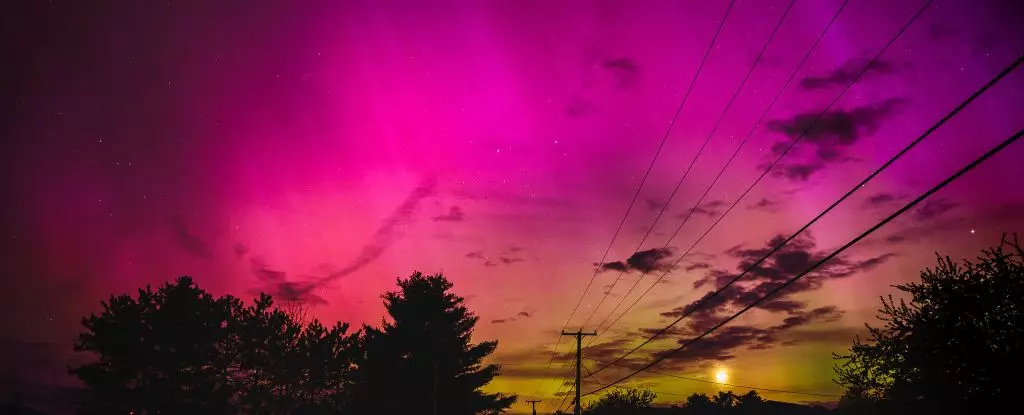Earth has recently experienced an astonishing display of green and red lights dancing across the skies, signaling the occurrence of solar storms. These solar storms, characterized by huge outflows of material from the Sun colliding with Earth’s magnetic field, have been particularly powerful. The most recent events have been labeled as extreme G5-level geomagnetic storms, the highest classification of solar storms that affect our planet. Despite the potential dangers associated with such solar disruptions, Earth has managed to avoid significant damage thus far.
The main culprit behind these intense solar storms is a sunspot region named AR 3664, which is currently traversing the face of the Sun. This active region has been responsible for unleashing several X-class flares, the most powerful type of solar flares emitted by the Sun. However, it is not the flares alone that pose a threat to Earth; the real impact comes from coronal mass ejections (CMEs). These massive expulsions of plasma and magnetic fields released from sunspot regions can lead to significant disruptions when they collide with Earth’s magnetic field.
One of the most visually captivating effects of solar storms is the aurora, a natural light display that occurs in the Earth’s atmosphere. The recent solar storms have caused auroras to appear in latitudes much lower than usual, creating breathtaking views of green and red lights in the sky. The red auroras, in particular, are the result of solar particles interacting with oxygen at higher altitudes, causing a vibrant scarlet glow that is ten times brighter than traditional green auroras.
Aside from the stunning visual effects of auroras, solar storms can have tangible impacts on Earth’s infrastructure. Power grid anomalies, power outages, and disruptions to satellites and high-frequency radio communications are common consequences of solar storms. The currents generated by atmospheric particle interactions can create surges in power grids, potentially leading to damage and outages. Additionally, disruptions to satellite and communication systems can occur, although these effects may go unnoticed by most individuals.
As sunspot region AR 3664 continues to produce solar flares and CMEs, the possibility of more solar storms looms on the horizon. The NOAA has predicted moderate geomagnetic storms to persist until a certain date, indicating that Earth may witness further displays of auroras in the near future. With the Sun reaching the peak of its 11-year activity cycle, more sunspot regions are likely to emerge and contribute to the solar spectacle. Monitoring websites by organizations like NOAA and the Australian Bureau of Meteorology can help individuals track the likelihood of seeing auroras in their respective hemispheres.
While solar storms may present potential dangers to Earth’s infrastructure, they also offer a mesmerizing display of natural beauty in the form of auroras. Understanding the impact of solar activity on our planet is crucial for preparing and mitigating potential risks associated with these celestial phenomena. As we continue to explore the wonders of our solar system, embracing the spectacle of solar storms and auroras can serve as a reminder of the interconnectedness between Earth and the cosmos.


Leave a Reply